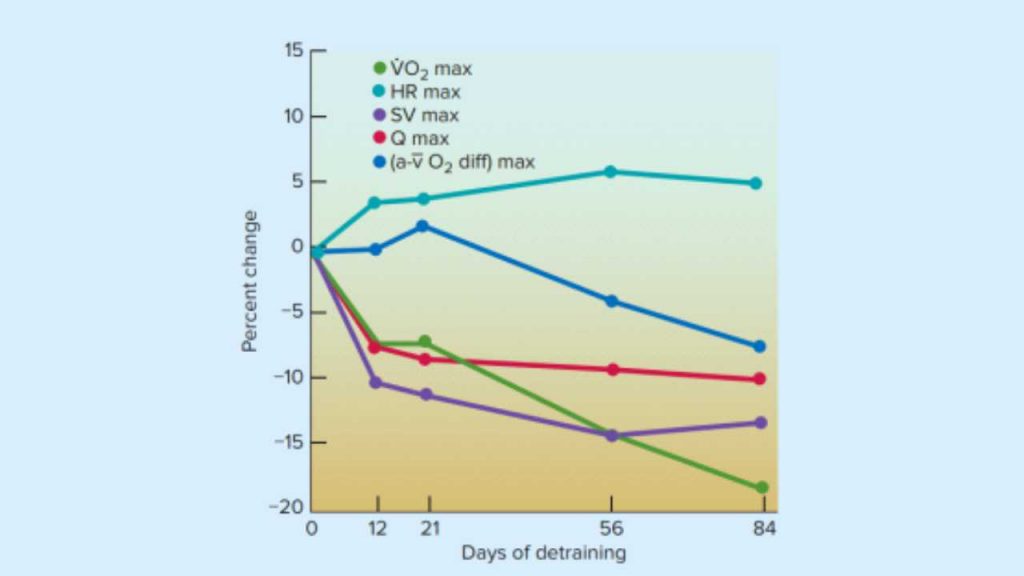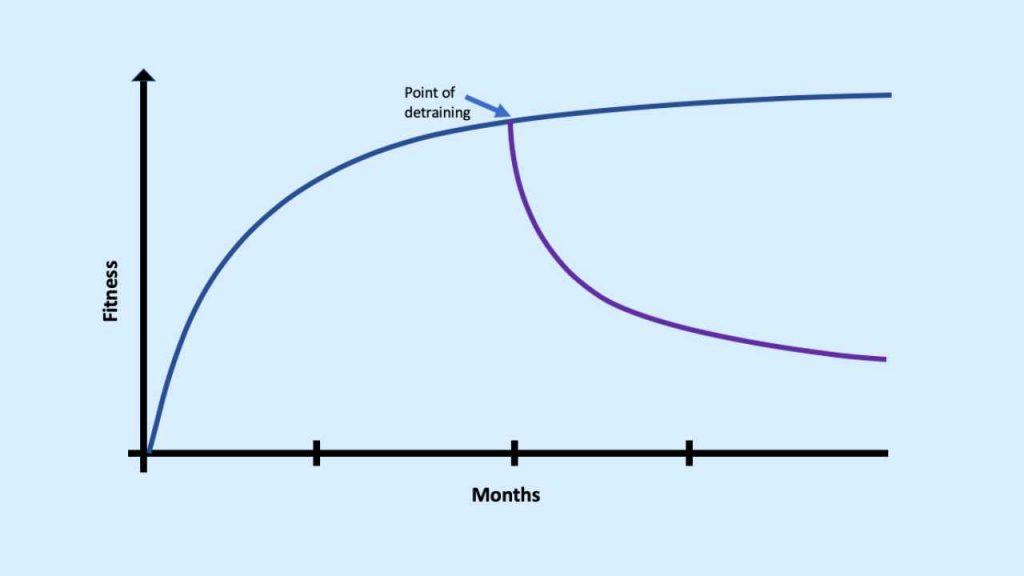
The Science of Detraining: What Happens If You Stop Running?

If you are a runner and a fitness enthusiast, you have probably heard of the expression “use it or lose it”. It is a hard truth when it comes to the human body — if you stop being active, you will end up losing your fitness.
In the runner’s world, there are several reasons why you might need to take a break. It could be work or family obligations, mental or physical fatigue, resting for an extended period after a race, vacation time, or injury. In other words, it’s life and your training has to stop for these reasons. So, how much of your endurance would you lose when you stop running? In other words, how much will you end up detraining?

Detraining is defined as a partial or complete loss of training-induced changes or adaptation that your body achieved, as a consequence of training reduction or cessation.
Your endurance is a result of a complex interplay of physiological and metabolic factors involving your heart, lungs, blood, blood vessels, and energy storage and usage. In order to understand this, we may look at the work of researchers Bosquet and Mujika, who present the effect of detraining on your endurance by mapping the heart’s pumping capacity (shown as Q max in RED) and your endurance capacity measured by how much oxygen is delivered to your muscles (shown as VO2max in PURPLE).
This study has followed the trend over 84 days of detraining. It shows us that the loss of endurance is as much as 8% in the first 10 days of stopping your runs and drops down to 20% in seven weeks.
This rapid loss in the first few days is because the heart’s pumping capacity has also dropped by 8% resulting in less blood being pumped to the legs. The subsequent decline is largely due to depletion in carbohydrate stores, enzyme level and a reduction in the efficiency of energy metabolism
In general, if we were to qualitatively plot the build-up in training and then show the point at which detraining happens, the graph would be as shown below.

This graph shows you that the decline in performance is rapid in the first 2-4 weeks (short term) and then tapers off. In fact, in about 3-4 months of stopping running (long term), you would be back to your baseline fitness. It has been suggested that the higher the trained-state VO2max, the bigger its decline during training stoppage. When comparing recently trained individuals to advanced athletes, researchers Mujika and Padilla submit that recently trained individuals show a lower decline in endurance performance as compared to elite or advanced athletes.
Also read: VO2max: Its Role in Running and How to Improve It
How should you restart your training after you have detrained?
It all depends on your age, your unique status as an athlete before you got detrained, as well as the number of weeks of detraining you underwent. There is no clear answer thrown up by research as to how long it will take you to get back to the original level. An advanced athlete will be able to bounce back faster than a beginner because of experience in building up to high mileage levels. Years of running helps build a large aerobic base and foundation. Your capillary density in the muscles is high, your muscle cells have more mitochondria (powerhouses), your enzymatic level is higher and your body has more red blood cells for oxygen delivery compared to a runner who has just started out.
If you have detrained for 3-4 weeks, you could expect to regain fitness in about 4-5 weeks. However, if you have completely detrained in about 3-4 months, it could take you a lot longer to get back in shape. It is important to note that your musculoskeletal system has become weak and returning to running has to be done cautiously and progressively.
Practice walk-running
Taking walk breaks during your runs allows the body to recondition the muscles and joints in a slow manner. It reduces the chances of injury to soft tissue.
Cut back on the number of weekly runs
Your body will need more recovery and hence reducing the number of weekly runs will allow you more time to get over muscle soreness. It is a good idea to reduce your weekly runs by one day, ie, if you were running four days, then go running for three instead.
Use time-based runs instead of distance
All of your training in this period when getting back will be at a slow easy pace. Hence, it is important that “time on your feet” is a better measure of how much you should train. Going for a 30-40-minute run is better than saying you want to run 7-9km.
Ease back into training
Allow your body to adapt to running lower mileage and gradually increase it every 2-3 weeks. If you listen to your body, it will tell you — based on muscle soreness — as to whether you have adapted to the weekly runs and whether you are now ready to add duration or distance.
Cross train more
Your body has deconditioned and it makes sense to use cross-training to counter the loads that running places on your joints after you restart. Hence, doing cycling, swimming, strength training, yoga, Pilates etc will allow you to train different muscle groups and balance them out.
Also read: Why Is Cross Training Important for Distance Runners?
Watch your diet
Detraining may cause you to gain weight. Once you restart training, ensure you don’t think it’s a license to eat more. In fact, creating a mild calorie deficit will help you lose weight. However, ensure that you stick to a balanced diet and focus on eating quality carbohydrates and protein immediately after your runs.
Be patient and don’t attempt to get back to aggressive training and mileage rapidly. Avoid the temptation to match paces with your original running group and buddies. Stay safe and refrain from hitting the road too fast. It may be a better idea to do short loops closer home, in case you feel exhausted and need to return. Lastly, save the registration for road races until you have regained your fitness and avoid falling into the trap of posting your return with a bang on social media.
References
1. Bosquet L, Mujika I. Detraining. France: Faculty of Sport Sciences, University of Poitiers.
2. Lacour J, Denis C. Detraining Effects on Aerobic Capacity. In: Marconnet P, Poortmans J, eds. Physiological Chemistry of Training and Detraining. 2nd International Course. Basel: Karger, 1984: 230-7.
3. Mujika I, Padilla S. Detraining: loss of training-induced physiological and performance adaptations. Part I: short term insufficient training stimulus. Sports Med 2000; 30: 79-87.














